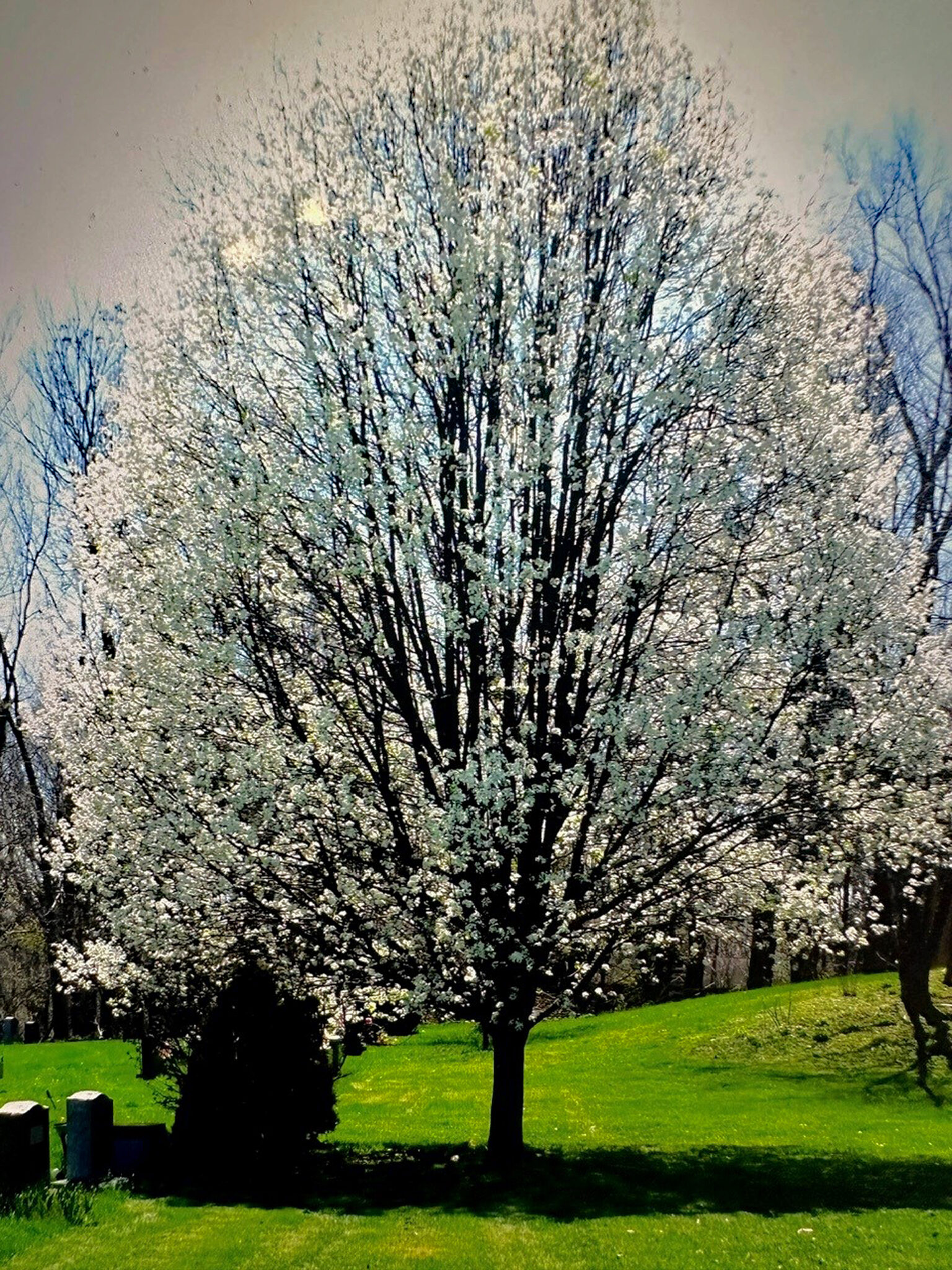What Tree Did Ohio Ban and Why?

By Eleanor Quigley
Alexandria, VA – HINT: Developers like this tree because it is inexpensive, grows fast, and its white flowers bloom in spring.
ANSWER: The Bradford pear tree. Look for them in early spring when their white blossoms catch your attention along I-95, I-66, and the Beltway.
Ohio banned the Bradford pear tree in January 2024 because it is highly invasive and outcompetes native vegetation that supports local ecosystems. Pennsylvania and South Carolina will ban them starting this year.
Bradford pear’s branches grow at a narrow angle from the trunk, resulting in weak branch structure prone to splitting. Leaves appear early, creating shade that stunts the growth of native plants needed by birds, butterflies, and beneficial insects. Flowers emit an offensive odor, a definite nuisance in residential areas. Birds eat the marble-sized fruit (not recommended for humans) and drop the seeds everywhere.
If you have a Bradford pear, Alexandria Beautification Commission (ABC) suggests removal and replacement with a native tree such as a dogwood, redbud, serviceberry, maple, or oak. ABC also encourages you to contact Virginia legislators and ask them to ban the selling of Bradford pear trees in the Commonwealth.
ICYMI: Apply Now for the Alexandria Chamber of Commerce’s 40 Under 40




